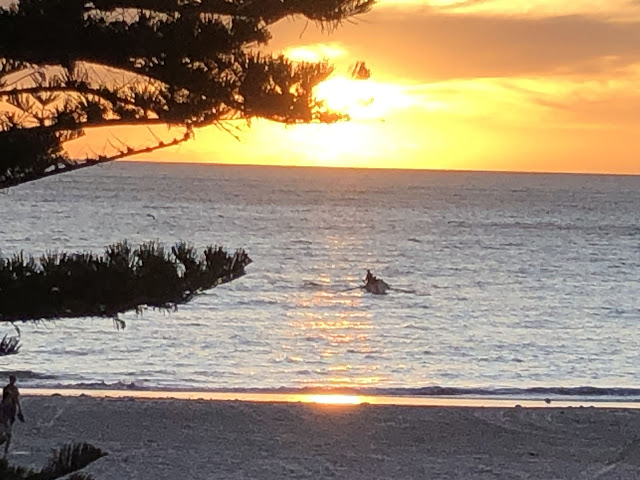Too many wines... too long a trip...
I only managed to get through half a days worth of photos and memories. So here's the rest of the day.
After lunch at Peter Lehmann's, we went up the hill to the Barossa Sculpture Garden. This gave us a panoramic view of the valley. Vineyards everywhere.
 |
| north |
 |
| east |
 |
| south |
Much of this area was settled by German immigrants who had fled religious persecution, so throughout the region you see evidence. This memorial begins with Joshua 2:9 -- "The Lord has given us this land."
Our next stop was a winery with a unique business plan -- they don't make wine to make money, they make wine to experiment and do more with the grapes. They are vineyardists. They sell 90% of their grapes to other wineries and use the remaining 10% for their own wines. We got the tour from the Rosenvale Winery general manager. And appropriately, he started us at the edge of the vineyard. These are almost ripe, semillion grapes (a French varietal). He said they would probably be picking in a week-ten days.We were drinking a sparkling semillion. While some wineries may use semillion in blending for sparkling wines, it is rare to have it as a stand-alone varietal. Very nice on a hot day - a crisp, refreshing taste.
We then had a grenache rose... then moved on to a light red grenache. He then remembered they were bottling some grenache, so he disappeared for a few minutes and returned with a plastic pitcher with wine so fresh it hadn't even made it to the bottles. That was a first!
 |
| 2016 Rosenvale Grenache |
 |
| the winemaker at work |
 |
10 Bulls label
recreated by their resident artist |
Our final stop was at the Saltram winery. The entire front of the winery was covered in grape vines. They make a nice entry area.
By the time we reached here most of the 20 people on the tour
were reaching the staturation point.
 |
| first wines at last winery |
As we headed home, we spotted some kangaroos in a nearby field. (At motorway speed, there was no chance for a pic.) Scott thought he had seen a koala during the morning ride through the Adelaide Hills.
We took a difrerent route home, so we got to see a new perspective of Adelaide. As we came near the port, we saw pelicans flying in formation and there were salt ponds where they were drying sea salt.
 |
| salt ponds |



















































